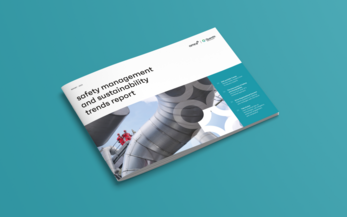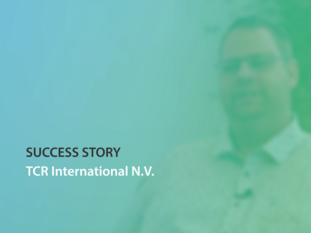5 minutes12/05/2017
Written by Timo Kronlöf
As I was walking around a factory floor with the plant’s production manager, he seemed a bit anxious as we kept identifying new hazards. There was hazardous forklift traffic, traffic not isolated from walkways, blind corners, loud noise obviously over any limits, repetitive failures of using PPEs, flammable material around hot work areas, poor levels of cleanliness, inadequate ergonomics and the list kept growing.
Even though I was a safety engineer with no operational authority at the plant, I needed to take a stand and said “Man, at least we need to ensure the usage of personal protection if you want to keep the production running”. The hazard identification round had just started, this was the first building but we already had written down countless different hazards. My papers were already running out of space. I had mentally prepared myself to expect this risk assessment project was going to be tough, but at this moment it felt completely impossible.
Finally, the production manager responded and went to a welder and started yelling that they should be wearing ear protection. One of the numerous problems was that the production manager himself wasn’t using his PPEs daily and his actions weren’t reflecting the speeches of the leaders. The production manager was laughing as he told me that there are always risks related to work and how safe the plant already was. He stated that everything was safe and there was no need to take corrective action as he had already discussed it with someone. I felt confused, I was supposed to be collaborating with line management and supervisors to work together to identify risks and mitigate them. Yet, the production manager didn’t seem to understand very much about safety in the first place and the workers didn’t seem to care even about their own health.
Who was I supposed to tell that these people needed to study and change their mind-sets? They felt that everything was just fine. The biggest problem for them was the temperature variation, whether it was too cold or too warm.
The real-life story above might sound distant for you if you’ve been working in a company where 'safety' has been there for a long time. However, if you are someone who has ignited or started the path of making things safer, you might relate to this story. Where would you start the journey if it wasn’t from a risk assessment or gap analysis of some kind? Maybe you would have hired a consultant, maybe you would have tried to copy and paste someone else’s safety programs. Different approaches might work but my approach was to implement a health and safety management system based on OHSAS 18001 and start with a comprehensive risk assessment. Why? Well, if you don’t have any systematic approaches, methods, processes, core responsibilities or reporting in place, it makes sense to take a tested framework and start by implementing the best parts of that. In addition, if you don’t understand the main risks related to your work, you may focus on the wrong things.
Some people will tell me that no standard or specification will improve your safety performance or there are far better options than OHSAS 18001 and 18002. Spare me from that thought. In my real-life story above, I felt it gave me confidence to move forward in my plans to change the company’s direction. I used OHSAS as a guideline, creating things from scratch. The specification also had all the main parts that were needed from a compliance point of view, so I didn’t need to implement double standards or processes just to make the government inspectors happy. I was also able to model and implement several different processes very quickly since there was plenty of material available online. I also found peers that were using OHSAS, ISO 14001, ILO-OHS 2001 or BS8800. Benchmarking really helped me to move forward and to be sure that I wasn’t alone with my ideas. It takes guts from a young safety engineer to push costly new processes into production schedules and supervisors’ task lists that are already filled by countless different requirements from HR, Production, Sales and Quality.
Moving beyond standards
Standards can be used to build the framework of your health and safety management system, but in the long run, I’m not sure if they are helping you towards safety excellence. A standard based management system or a guideline will always be just a piece of paper or a documented plan of how things should be in theory. Reality is always more complex.
You might realise that some methods aren’t effective, or are not as effective as they should be when compared to something else. Remember that safety management is always about priorities since there’s never too much resources available. You will always need to compare different procedures based on their time or money consumption and added value. If you invest 1,000 working hours a year on documenting and enforcing your workforce’s commitment to using ear protection, but you still have several areas where noise is not isolated, then you might be investing in the wrong place.
First steps usually require control and a lot of training regardless of the framework. It’s ultimately better to train people to make them think and take responsibility for themselves, compared to you trying to push and control them. Organisations should look at the standards and frameworks available and improve the plans beyond those requirements to really create value for their own organisation and its processes. Whether it’s improving productivity or avoiding costly accidents, you should identify the low hanging fruits and set the safety goals to harvest those first. In the beginning, of course, you need to invest (£$€) in order to get things moving. That investment should be easy to rationalise with just the cost cuts related to improved safety. Use your risk-based understanding in your organisation’s context and data to back up your EHSQ investment plans.
ISO 45001
I’ve been following the discussion about the new standard for over two years now. It’s unfortunate that the standard has been delayed, but I’m still looking forward to getting it approved. As far as I’ve understood, the main changes will be related to the overall approach, which will be more risk-based than OHSAS. A good improvement will be that ISO 45001 will have a stronger focus on the context of the organisation meaning that organisations need to understand and build management systems based on their particular business environment and take various stakeholders into account. It makes sense, that the working environment and business in construction and IT companies are not the same.
Other known changes will be around workforce involvement and top management commitment. Both have already been in OHSAS 18001, but there will be more of a focus. There’s a lot of evidence that strong commitment from management is a key factor in successful safety programs and the same goes with people engagement in safety. No regulation or guide will help you improve if you don’t get your people’s approval to the team work of safety.
One of my former foreman told me that sometimes it's easier to learn by doing. I'd argue that standards are a useful way to manage safety even without full understanding of theories behind safety engineering. However, they can be used by seasoned professionals as well.




